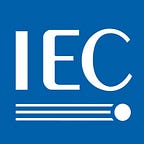According to research by IDTechEx, the wearable technology industry is expected to grow from USD 24 billion today to over USD 70 billion in 2025. And, unlike other sectors, the COVID-19 pandemic proved to be an accelerator for many of the key trends driving wearable technology, such as the move towards remote patient monitoring and digital healthcare as well as the current embrace of fitness and wellbeing.
Although often thought of as a comparatively recent phenomenon, the first examples of wearable technology date back to the 16th century, when watches were worn either as necklaces or bracelets and, later, inside a pocket. Nowadays, wearable technology is everywhere. While popular examples include fitness trackers and smart watches, wearable technologies are finding their way into new areas such as fashion and medical care.
Recent advances in technology have enabled wearables to be available in many different shapes and sizes. For example, the trend towards devices that are increasingly small, thin and flexible is possible because of advances in miniaturization and new interfaces that move away from touch and towards voice or motion activation. As a result, wearable devices are becoming unobtrusive and nearly invisible.
Such a development has benefited the medical sector. For instance, electronic thin patches can be used to help manage diabetes. They can be applied to the skin in order to continually monitor glucose levels and, in some cases, can pump insulin into the bloodstream. In a more recent development by researchers at the University of California San Diego, skin patches can be used to help continuously track blood pressure and heart rate. This is part of a move towards patient monitoring that can be used for both hospital inpatient supervision as well as part of outpatient care.
Another medical break-through calls for the use of wearable technology to help improve and assess human movement during physical rehabilitation. A VR electronics company has teamed with a New York City hospital to develop a full-body suit to provide personalized, real-time diagnosis as well as physical training for patients using sensors to collect biometry, motion capture and haptic feedback.
Some unconventional wearable technologies have also emerged. At MIT, researchers at the Media Lab have developed a musical keyboard using knitted textiles. The keyboard can be easily folded and rolled up much like any other piece of fabric. The fashion industry has also taken an interest in wearable technology with designers creating solar-powered overcoats, LED shirts and dresses and small accessories, such as earrings or bracelets, that incorporate Bluetooth technology.
Emergence of new markets and applications
In March 2017, the IEC set up Technical Committee 124 (TC 124) with the aim of providing standards in the field of wearable electronic devices and technologies which includes materials and devices that are patchable, implantable, ingestible as well as those made from electronic textile materials. Four working groups have been organized to cover standardization in areas such as terminology and the measurement and evaluation methods for e-textiles, all other materials as well as devices and systems.
Because wearable electronic devices and technologies are varied in types, shape and purpose, IEC TC 124 has defined them as having such common characteristics as always on and collecting data with the aim of improving how users interact and benefit from their environment.
According to Jae Yeong Park, Secretary to IEC TC 124, “The business environment of wearable technologies is rapidly expanding on a global basis, and we see the emergence of new markets and applications. Already, more than four thousand companies, including all major electronics multinationals, are developing wearable electronic devices and technologies for the global market.”
Some of the most promising areas of development are medical and infotainment applications which includes smart eyewear, smart clothing, patchable devices, and wearable power sources. “In the future, we could see the incorporation of wearable electronic devices with clothing and other products as well as communication to improve user interface with the IoTs and other devices,” remarks Park.
Role of standards
The standardization of wearable technologies is still in its early phases. However, according to Park, “There is a common agreement that only international standardization can reduce the cost and effort for early industrialization and provide effective guidelines towards stabilization and expansion of the market.”
In 2021, IEC TC 124 issued its first publications consisting of three international standards and one technical report. IEC 63203–101–1 provides definitions to the vocabulary frequently used in relation to wearable technologies thus ensuring a common basis for the discussion of key concepts. Two standards, IEC 63203–201–3 and IEC 63203–204–1, provide test methods related to e-textiles. Specifically, IEC 63203–201–3 defines a test method to determine the electrical resistance of conductive fabrics with reference to the temperature and humidity between skin and clothing. IEC 63203–204–1 specifies the test method for measuring the durability of leisurewear and sportswear e-textiles during household washing.
E-textiles are well suited to monitor biological signals such as respiratory rates and cardiac signals. Alongside the e-textiles, a detachable electronic device needs to be connected in order to measure the information from the e-textile. Currently, no standardized connection interface exists between the electronic device and the e-textile although the conductive snap fasteners are the most commonly used. With IEC TR 63203–250–1, IEC TC 124 has provided a review of conductive snap fastener connectors and provides guidance for future standardization work regarding e-textile connectors.
Currently, IEC TC 124 is developing 14 publications on topics such as test methods for electronic textiles and glove type motion sensors as well as the performance of fitness wearables. Moving forward, “TC 124 will provide standards for the relevant materials, devices and systems with a focus on adaptability and reliability. It is an exciting market with much potential for growth. We need standards that can reflect market demand,” concludes Park.
